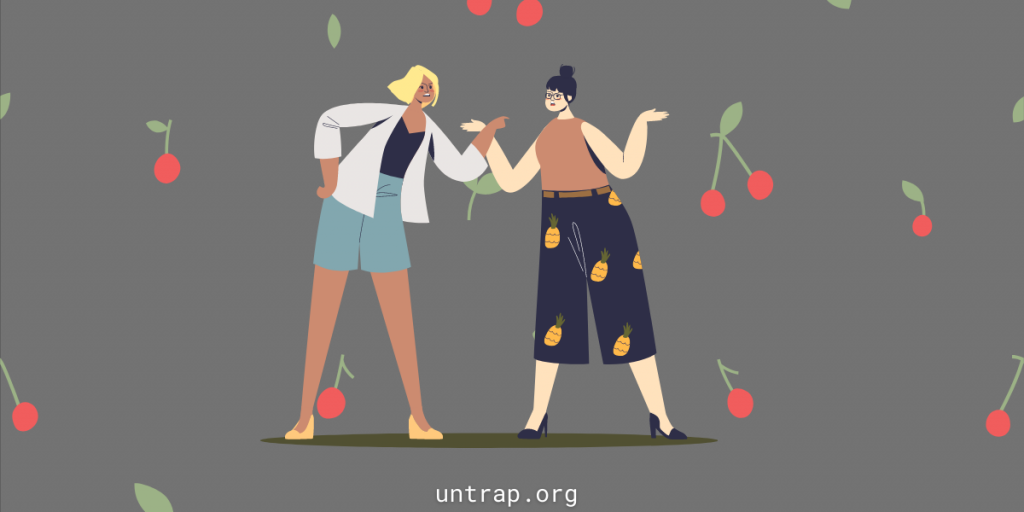
Have you ever noticed that some people only present evidence supporting their argument while ignoring anything contradicting it?
Shopped online and found only good reviews of a product posted by the retailer?
It is common for humans to choose the information that reinforces their position selectively, but does this distort reality?
Well, then, most of us are into cherry-picking!
Here in the blog post, we discuss what cherry-picking is (regarding cognitive biases) and provide some tips on how to survive these traps.
Understanding The Cherry-picking
Cherry-picking is when you choose only certain pieces of evidence that support your opinion and ignore any evidence that disagrees. This can be misleading and give a false impression.
Imagine an educational institution that wants to attract more students to a certification program. They conduct a study on their graduates’ employment rates and only choose to highlight the ones who found jobs within six months of graduation.
Do you think this misleads potential students into thinking that their program has better job prospects than it actually does? Musn’t they pay attention to all the other graduates who took longer to find employment or were underemployed? Why present only the selected data to prospective students?
This conscious or unconscious selection of favored information by the institution leads to distorted perceptions, leading people to make irrational decisions based on inaccurate assumptions.
Exploited and Exploiters
Typical victims of “Cherry-picking” are those who are open to confirmation bias, cannot critically think, or tend to believe and accept misleading, incomplete, or biased information.
People who use this bias tend to be manipulative individuals or organizations who intentionally use cherry-picking as a tactic and may be trying to push a particular agenda or viewpoint. They may selectively choose the information supporting their position while ignoring any evidence contradicting it.
This is seen in politics, science, and journalism. For example, politicians may selectively choose statistics supporting their policies while ignoring other relevant data. Or a journalist may only report on one side of an issue without presenting alternative perspectives.
Day-To-Day Cherry-Picking
- A car dealership advertising a “limited time offer” on their vehicles but failing to mention that the advertised price doesn’t include associated taxes or fees.
- A news outlet selectively chooses which stories to cover to fit a certain narrative or agenda.
- Politicians focus on one story of success from their past and ignore any negative stories that could damage their public image.
- An insurance company highlights the benefit of its “affordable rates” but does not mention the policy’s other limitations, such as mandatory deductibles or coverage limits.
Recognizing When You Are Slipping Into The Cherry-picking Trap
One way to identify if you are falling into the trap of “Cherry-picking” is to double-check your sources of information. Make sure you get a full picture by looking at multiple angles, not just ones that confirm your pre-existing beliefs or paint a rosier picture than reality.
Additionally, paying attention to your own biases and taking steps to counteract them can be helpful. Ask yourself tough questions and continually challenge your assumptions. Finally, consider seeking second opinions and alternative perspectives from trusted advisors or experts in the field.
Overcoming The Cherry-picking
Educate ourselves on the dangers of “Cherry-picking” and how it can lead us astray.
- Look at the situation from different angles to gain a wider perspective.
- Seek out multiple sources of information rather than just relying on one.
- Increase awareness about confirmation bias and other cognitive traps we may fall into when making decisions.
- Take time to step away from the situation to think objectively without any emotional attachment or preconceived ideas that may cloud our judgment.
- Ask a third party for their opinion and advice, preferably someone unbiased and with no vested interests in our decision-making process.
- Re-evaluate past decisions where “Cherry-picking” occurred—reflecting on what went wrong and how we could have made better, more informed choices if we had been mindful of our biases.
Final Thoughts
So, how can you win your next argument with cherry-picking? This tactic can make your argument appear stronger, but it could undermine your credibility if you are trying to take undue advantage! Cherry-picking can sway the audience or opponent by presenting only the evidence supporting your side of the argument.
Though, ignoring the evidence could weaken your position. Cherry-pickers intentionally ignore evidence that contradicts their position and can give the impression that their argument is stronger than it actually is.
So it is crucial to consider all available evidence rather than just selecting the ones that align with your viewpoint when engaging in a rational argument. By doing so, you can strengthen the credibility of your argument and ensure that it is grounded in intellectual honesty.
Finally
Cherry-picking is a sour strategy that only leaves a bad taste in your mouth. So, let’s all strive to pick all the evidence, not just the juicy bits. Hope this blog post helped you understand intellectual honesty. To gain more insight into the tendencies of the human mind, subscribe to our newsletter.
Reference
The above article is based on the book Thinking Clearly; this article is here to help us learn and understand how our minds can be tricked by something called cognitive biases.